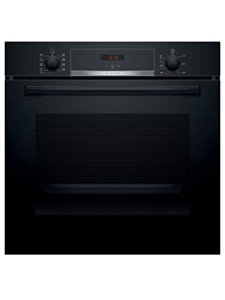
19
MayYou'll Never Guess This Built In Electric Oven's Benefits
The Comprehensive Guide to Built-in Electric Ovens and Hobs
In today's busy world, modern-day kitchen appliances have progressed considerably to deal with the tastes and requirements of contemporary homeowners. Amongst these appliances, built-in electric ovens and hobs stand out for their efficiency, design, and functionality. This short article checks out the functions, advantages, setup suggestions, and upkeep of built-in electric ovens and hobs, along with dealing with often asked concerns.

Comprehending Built-in Electric Ovens
What Is a Built-in Electric Oven?
A built-in electric oven is a device developed to be set up into a wall or kitchen cabinets, supplying a smooth, integrated ovens look in the kitchen. Unlike freestanding ovens, built-in models save area and often come geared up with additional features such as self-cleaning cycles, convection cooking, and different cooking modes.
Kinds Of Built-in Electric Ovens
- Single Ovens: Built In Electric Oven Ideal for smaller kitchen areas or those who prepare for less people.
- Double Ovens: Offer more cooking area, appropriate for larger families or those who entertain often.
- Combination Ovens: These consist of both a standard integrated oven hob & extractor packages and a microwave, offering flexible cooking options.
Benefits of Built-in Electric Ovens
| Advantage | Description |
|---|---|
| Space-Saving Design | Fits flawlessly into cabinets, maximizing counter area. |
| Enhanced Aesthetics | Creates a contemporary, professional kitchen appearance. |
| Versatile Cooking Options | Frequently includes several cooking modes including bake, broil, and convection. |
| Energy Efficient | Takes in less energy than standard ovens. |
Understanding Built-in Hobs
What Is a Built-in Hob?
A Built In Electric Oven-in hob is a cooking surface installed into the kitchen countertop, integrating effortlessly with the kitchen design. Offered in electric, induction, and gas varieties, electric hobs are renowned for their accuracy and ease of usage.
Types of Built-in Hobs
- Electric Hobs: Traditional coil aspects that heat via electrical resistance.
- Induction Hobs: Use magnetic energy to heat only the cookware, making them much faster and safer.
- Ceramic Hobs: Feature a smooth surface area with glowing heat beneath, offering simple cleansing.
Benefits of Built-in Hobs
| Benefit | Description |
|---|---|
| Fast Cooking Times | Electric hobs heat rapidly, decreasing overall cooking time. |
| Easy to Clean | Flat surface area allows for fast and straightforward cleaning. |
| Resilient | Traditionally built to last and endure high temperatures. |
| Versatile Compatibility | Functions well with various cookware products. |
Installation Considerations
Setting up a built-in electric inbuilt oven and hob requires mindful planning.
Steps for Installation
- Procedure the Space: Ensure the measurements of the oven and hob match the designated area in your kitchen.
- Check Electrical Requirements: Consult an electrician to ensure wiring can handle the appliance's power needs.
- Positioning of Appliances: Built In Electric oven Position the oven at a practical height, typically in between waist and eye level.
- Ventilation: Ensure appropriate ventilation, especially if your oven integrates a range hood.
Important Tools
- Power drill
- Screwdrivers
- Level
- Measuring tape
Security Precautions
- Constantly disconnect the power before installation.
- Follow producer instructions thoroughly.
- Consider employing an expert for electrical connections.
Maintenance Tips
Keeping built-in electric ovens and hobs is vital for durability and performance.
Regular Care Routine
- Cleaning up the Surface: Use a soft fabric and manufacturer-recommended cleaner.
- Examining Electrical Connections: Check cables and plug for damages occasionally.
- Cleaning Filters: If the oven has a ventilator, tidy or change the filters as required.
Troubleshooting Common Issues
| Concern | Possible Solution |
|---|---|
| Oven Won't Heat | Inspect the power supply and heating element. |
| Heating Inconsistency | Check the thermostat and oven calibration. |
| Hob Not Heating | Ensure cookware is suitable and check the power supply. |
Regularly Asked Questions
1. How do I select the ideal size built-in electric oven?
Choosing the ideal size includes measuring your kitchen space and considering how much cooking you usually do. If you amuse often or have a large family, choose a double oven.
2. Are built-in electric hobs safe to use?
Yes, built-in electric hobs are safe, especially induction hobs which only heat up the pots and pans, reducing the threat of burns.
3. Can I set up a built-in oven and hob myself?
While it is possible for skilled DIY lovers, working with an expert is suggested, particularly for the electrical connections.
4. How frequently should I clean my built-in oven and hob?
Cleaning up should be done routinely after usage, with deep cleaning intervals depending upon cooking frequency - typically every couple of months.
5. Do built-in appliances need special upkeep?
Built-in appliances need comparable upkeep to freestanding designs, but correct care must be taken with their surrounding cabinets.
Built-in electric ovens and hobs provide a fusion of innovation and style, providing efficiency and contemporary aesthetics to any kitchen. With proper selection, careful setup, and regular upkeep, these appliances can improve one's cooking experience for numerous years. Understanding the functions, benefits, and care requirements can empower house owners to develop the kitchen of their dreams-- efficiently and stylishly.
As kitchens continue to develop into main centers of the home, selecting the ideal built-in solutions plays an important role in daily cooking creativity and enjoyment.


Reviews